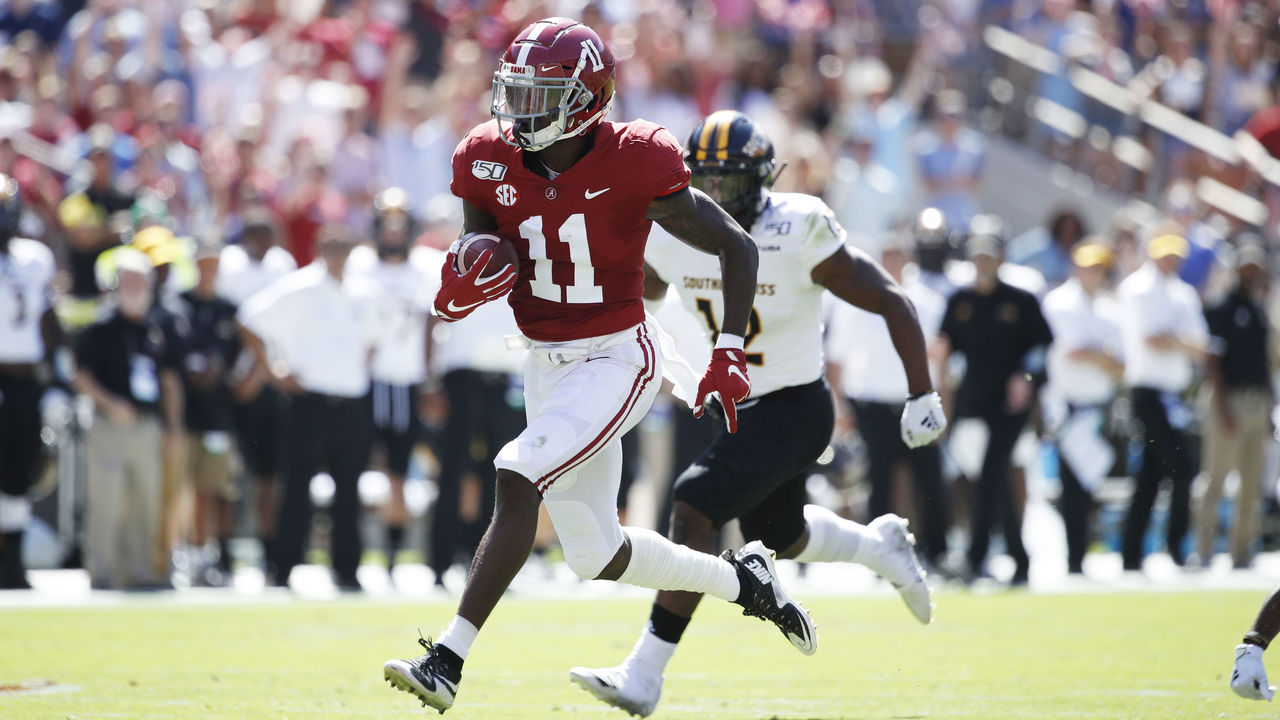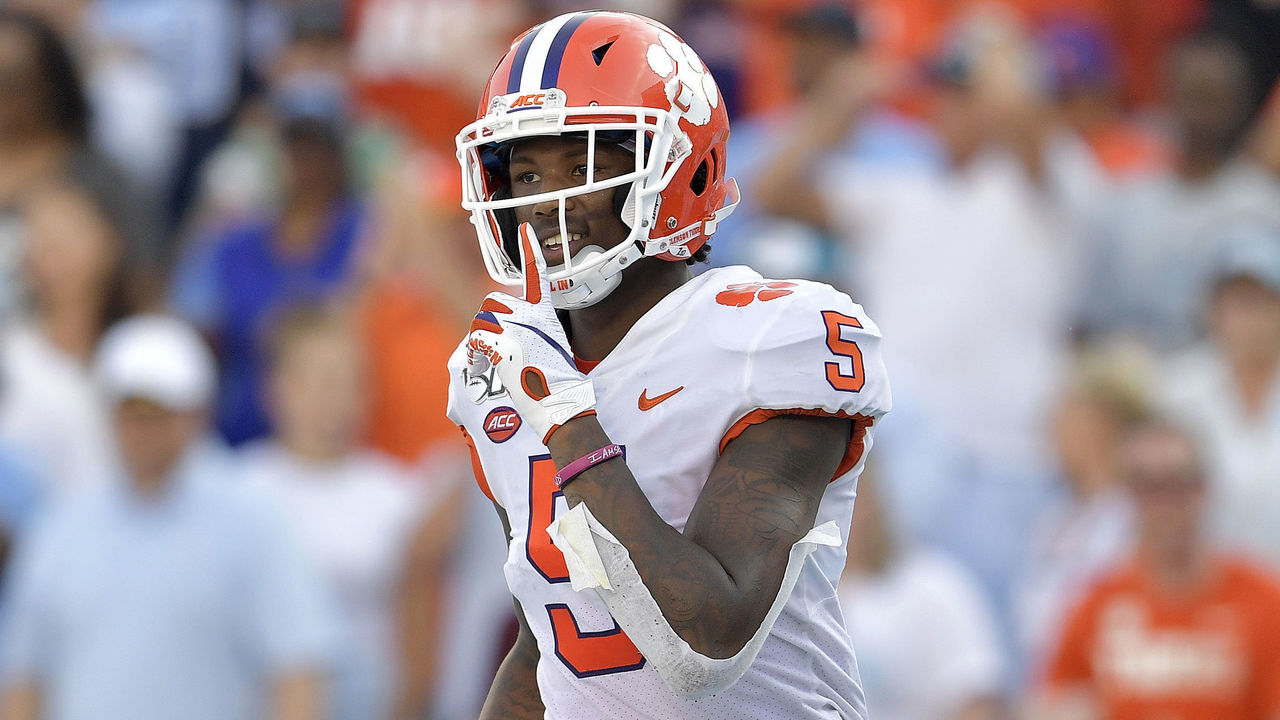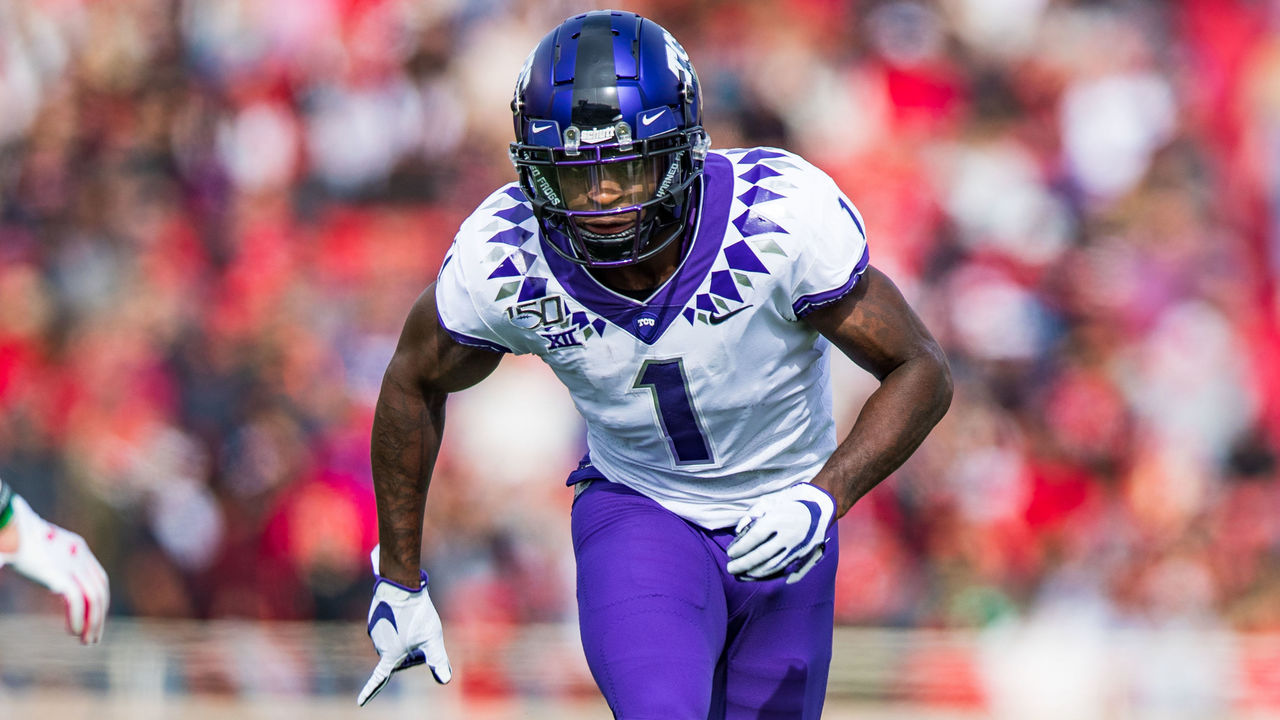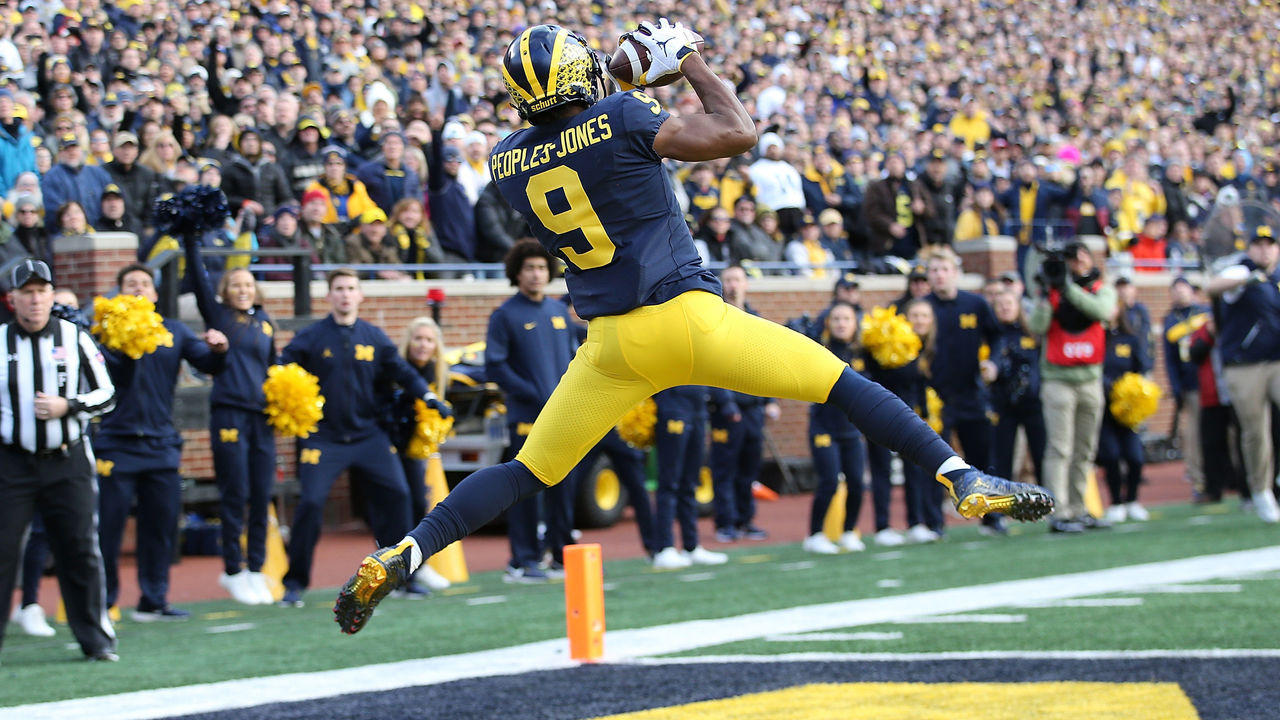Fantasy: Which WR prospects have the best chance to become stars?
Find positional rankings, additional analysis, and subscribe to push notifications in the NFL Fantasy News section.
Prospect Fantasy Outlooks
- Quarterbacks
- Running Backs
- Wide Receivers
With the 2020 NFL Draft less than a month away, we've had time to go over prospects' game tape, analyze their athletic testing, watch interviews, and more in order to project what their professional careers will look like.
As we wait to find out how NFL front offices value the incoming crop of rookies, the process of translating available information to help us make fantasy decisions can begin, though landing spots will have a major fantasy impact in terms of a player's opportunity, draft capital, the coaching he receives, and team culture.
The range of outcomes for college stars entering the pros is vast. This year's receiver class is deep, so let's take a look at the wideouts with the best chance to become fantasy relevant at the next level.
Two at the top Icon Sportswire / Icon Sportswire / Getty
Icon Sportswire / Icon Sportswire / GettyCeeDee Lamb, Oklahoma
Jerry Jeudy, Alabama
Similar to the running backs entering the draft, there are two receiver prospects who stand out above the rest in 2020.
Lamb is as natural a receiving talent as we've seen in recent years. After breaking out as a 19-year-old, he produced quality numbers in each of his three seasons at Oklahoma, culminating in a 62-catch, 1,327-yard, 14-touchdown campaign. He's a fierce competitor who makes up for his lack of elite straight-line speed by excelling at everything else, whether it's great hands, outstanding body control, sneaky burst, or his ability to adjust to poorly thrown balls; Lamb is a complete package. He's an instinctive, creative wideout with excellent vision once the ball is in his hands - evidenced by his best-in-class average of 21.4 yards per reception.
Jeudy also profiles as a No. 1 option in the NFL and might even be more pro-ready than Lamb thanks to his undeniable talent as a route-runner. Despite facing high-level competition in the SEC, he regularly had college defenders' heads spinning as they tried to keep up with his cuts. Creating separation will be his calling card in the pros and should make his transition smooth. However, for Jeudy to reach his ceiling, he'll need to show he can be more physical on contested catches and clean up some of the inexplicable drops he made in college.
Fantasy outlook: Lamb and Jeudy occupy the first two spots in my dynasty rookie rankings as potential top-10 fantasy wideouts. When projecting dynasty outlooks, remember that receivers tend to hold their value longer than running backs.
With both players expected to be selected within the top 15, it shouldn't take long for either to make their mark in the NFL. Several teams in that range are in desperate need of a top playmaker in the passing game, specifically the Raiders, Jets, and 49ers - which would position Jeudy and/or Lamb to get enough volume to deliver WR2 fantasy numbers in Year 1.
Loaded with upside Joe Robbins / Getty Images Sport / Getty
Joe Robbins / Getty Images Sport / GettyHenry Ruggs III, Alabama
Justin Jefferson, LSU
Denzel Mims, Baylor
Any conversation about Ruggs has to begin with his mind-bending speed, which he put on display with a 4.27-second 40-yard dash at the combine. However, he does more than just stretch the field. Ruggs is a hard worker and an improving route-runner with a more physical style than his 5-foot-11, 188-pound frame would suggest. He often comes down with passes he has no business catching by tracking the ball well, then using his body control and 42-inch vertical to challenge defenders in the air. Though his college production was limited in a crowded Alabama offense, his explosiveness before and after the catch make him desirable to all 32 franchises.
Jefferson is one of my favorite receiver prospects this year, which is notable given the depth of this group. He dominated out of the slot in 2019, posting an absurd 91% catch rate en route to 111 receptions, 1,540 yards, and 18 touchdowns. You can't deny he was the beneficiary of a great scheme and strong quarterback play at LSU, but he has all the tools to translate that production to the pros. Jefferson is a natural pass-catcher with a big catch radius and an excellent combination of size and speed. If he can continue to refine his route running, he could develop into a premier slot receiver with 100-catch upside in the right NFL offense.
Mims could be this year's DK Metcalf - a prospect whose impressive size, speed, and physicality allow him to overcome flaws such as a limited route tree. It's impossible to watch his tape and not fall in love with his upside as a potential No. 1 target with a huge catch radius who dominates contested situations with an ability to leap over defenders. However, keep in mind that Baylor wideouts who reach the league have found limited success. There's a high ceiling and a low floor for whichever team drafts him.
Fantasy outlook: As copycat NFL front offices look to mimic the success of teams like the Chiefs, speed is high on everyone's wish list. Finding the next Tyreek Hill isn't easy, but Ruggs has the elements to make a similar impact. Though it might take a year or two, he has the potential to be a top-24 fantasy wideout.
Jefferson's early-career fantasy value is linked entirely to his landing spot. If selected by a team that immediately installs him as its primary slot receiver, Jefferson could have a rookie year that resembles Keenan Allen's 2013 effort, when he was a volume-dependent WR2 in fantasy.
Mims was one of the biggest risers on my board after my latest round of research over the last few weeks. He now rounds out my top five at the position. While he's more of a long-term project than the prospects above him, his ceiling is as high as anyone's in the class.
Size matters Grant Halverson / Getty Images Sport / Getty
Grant Halverson / Getty Images Sport / GettyTee Higgins, Clemson
Michael Pittman Jr., USC
Antonio Gandy-Golden, Liberty
Higgins did most of his damage as a big-bodied downfield weapon in college, hauling in passes from Trevor Lawrence and averaging 19.8 yards per catch. His 6-foot-4, 216-pound frame could stand to add some muscle, but the more significant issues will be whether he has enough speed to continue to beat defenders deep, and whether he can improve as a route-runner in order to make more plays in the short-to-intermediate range of the field.
Pittman is an intriguing prospect who profiles as more of a reliable No. 2 receiver in an NFL system. A physical player at 6-foot-4 and 223 pounds, he uses size, power, and soft hands to win against defenders, and he's also got gazelle-like acceleration in his arsenal. It took him a while to break out, but his 101 receptions in 2019 can't be discounted. His father, Michael Pittman Sr., spent 11 years in the league as a running back and NFL decision-makers will surely consider those bloodlines, especially after executives had limited time to spend with prospects leading up to the draft.
Gandy-Golden has the exact same measurements as Pittman Jr., but was a three-year producer while playing at a smaller school. How much of his production was due to a lower level of competition is hard to gauge and his uneven performance at the Senior Bowl didn't answer those questions. What we do know is that Gandy-Golden has outstanding hands mixed with great ball skills. When you combine that with his size, you have an alluring talent. My biggest knock on him was that he didn't have the "my ball" mentality you want from a top receiver, and that's not normally something you can teach.
Fantasy outlook: All three of these wideouts would be best deployed as quality second receivers in the NFL. Higgins' clearest path to fantasy production is as an Alshon Jeffery-style outside receiver who makes up for lower yardage totals with his work in the red zone. Jeffery's recent struggles can make you forget he was once a force playing alongside Brandon Marshall in Chicago.
Pittman has a little of Marshall's game and would be my pick to overachieve among this trio. He deserves to be a first-round pick in dynasty rookie drafts.
It's a long shot that Gandy-Golden will emerge as a star in an NFL offense, but we're entering the portion of the draft where teams should focus on ultimate upside. Dynasty owners should take a similar approach, so he'll be on a few of my rosters in 2020.
Overhyped John E. Moore III / Getty Images Sport / Getty
John E. Moore III / Getty Images Sport / GettyJalen Reagor, TCU
KJ Hamler, Penn State
It can be risky to shy away from prospects this early in the process. Still, there are still a couple of players who I struggled to grade as favorably as other people in the industry did.
Reagor is a dynamic playmaker and explosive return man with limited offensive applications at the next level. His route running isn't technical enough for him to be a star in the slot and he hasn't shown the ability to beat press coverage on the outside. He should find a home on a club that values his special-teams contributions and, over time, might earn a small role on offense.
Speedy smaller receivers have been given new life in today's NFL, and perhaps a team will fall in love with Hamler's stop-start agility and short-area quickness. However, at 5-foot-9 and 178 pounds, he'll likely be limited to a low-volume role in the slot. Hamler isn't a traditional deep threat, so an offensive coordinator will need to scheme plays to get the ball in his hands. Think Tavon Austin without the top-10 draft pick forcing him to get snaps early in his career.
Fantasy outlook: Many receivers who are smaller in size find ways to be effective in the league. However, Reagor and Hamler don't have the tools or the physicality to take on heavy target loads in the pros, so they'll need ideal scenarios and plenty of development to become fantasy relevant. Let another owner take the risk.
Underhyped Matthew Stockman / Getty Images Sport / Getty
Matthew Stockman / Getty Images Sport / GettyLaviska Shenault Jr., Colorado
Brandon Aiyuk, Arizona State
Devin Duvernay, Texas
Shenault is a physical freak with durability concerns holding back what could be elite upside. His versatility allows you to line him up anywhere and even give him touches out of the backfield in the same fashion as Deebo Samuel or Robert Woods. People tend to focus on Shenault's physical traits, but he's an underrated route-runner with solid hands. At Colorado, he proved he can battle for short passes or go deep and win jump balls. If he can stay healthy, he'll be an exciting offensive star.
Aiyuk is also a versatile prospect with big-play ability, but he will need to evolve in order to reach his peak in the NFL. Expanding and refining his route tree will be the first thing to address, and he needs to learn how to confront press coverage. If he can upgrade in those areas, he'll earn a starting role as a complementary receiver.
Duvernay's quickness makes up for the fact he's not a particularly precise route-runner. Even so, he has the potential to be an impact slot receiver, with great hands and a strong body that can take on any defender in contested situations or after the catch. Proving that he can gain separation against NFL defenses will be his challenge as a rookie.
Fantasy outlook: It took a while to move Shenault down to this section of the list because his talent warrants consideration as a potential top-24 fantasy receiver in the right offense. Let's hope he can stay on the field.
Aiyuk just underwent core muscle surgery, and though he should be healthy in time for training camp, we don't know if it'll affect how teams view him in the draft. Prior to the surgery, there were rumors he could potentially sneak into the first round, which would dramatically increase his fantasy value.
Duvernay isn't the type of player I normally target, since slot receivers are often so volume dependent and rarely post the kind of touchdown numbers that lead to fantasy stardom. Even though I can't completely place it, there's just something about his game that draws me in enough to invest in the third round of upcoming dynasty drafts.
Works in progress Leon Halip / Getty Images Sport / Getty
Leon Halip / Getty Images Sport / GettyDonovan Peoples-Jones, Michigan
Tyler Johnson, Minnesota
Bryan Edwards, South Carolina
Quintez Cephus, Wisconsin
Chase Claypool, Notre Dame
Peoples-Jones is another quality returner who dealt with bad quarterback play, limiting his offensive production in college. He's a raw prospect with natural pass-catching chops and an affinity for acrobatic catches.
Johnson is a smart possession-style slot receiver with a basketball background. He has reliable hands, but lacks speed, even for his size. There should be serious doubts about his ability to create separation at the next level.
Edwards doesn't have an impressive athletic profile or the kind of college production you want to see from a future pro talent. He's not a great route-runner at this stage of his career and his numbers were often built up with an abundance of screen passes. There's a lot of work to do before he becomes a regular on an NFL field.
Cephus is a long-shot prospect who will need to prove he's a better athlete than his testing showed. His 4.73-second 40 time torpedoed his stock for the time being.
Claypool is on the opposite end of the spectrum as a combine warrior. He's a big-bodied wideout with excellent straight-line speed who moves like a tight end when changing direction. Some in the industry have suggested a full shift to tight end would give him a better chance at success in the pros.
Fantasy outlook: I don't recommend getting overly excited about anyone in this final section. They're developmental prospects to keep in mind for future fantasy seasons.
Prospect Fantasy Outlooks
- Quarterbacks
- Running Backs
- Wide Receivers
Copyright (C) 2020 Score Media Ventures Inc. All rights reserved. Certain content reproduced under license.